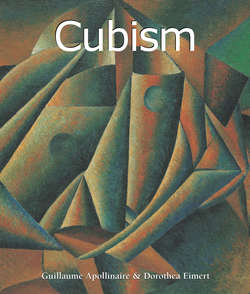Читать книгу Cubism - Guillaume Apollinaire - Страница 9
На сайте Литреса книга снята с продажи.
III. Picasso and Cubism
ОглавлениеPablo Picasso, Three Women, 1908.
Oil on canvas, 200 × 178 cm.
The State Hermitage Museum, St. Petersburg.
Les Demoiselles d’Avignon: Breaking with the Past
The young artists of the early twentieth century undoubtedly demonstrated an avant-garde spirit of aesthetic radicalism. Yet even the leader of the Fauves, Matisse, was scandalised when he visited Picasso and saw his masterpiece; to him the painting was an abuse of modern art, as he could find no aesthetically justified explanation for it. Could the work indeed be classified (at least in those days) as modern art? Many of its first viewers, at any rate, saw it as “something Assyrian” (that is how Wilhelm Uhde presented it to Kahnweiler). Douanier Rousseau, we know, noted in 1908 that Picasso worked in the Egyptian genre. It has now been proven that during his work on Les Demoiselles d’Avignon, Picasso had two Iberian stone sculptures with which he “took counsel” in his experiments. Of course, there was certainly Matisse’s Blue Nude and Derain’s Bathers, but essentially, Picasso was always a solitary artist: “He was always free, owing nothing to anyone but himself” (Kahnweiler). From the distance of over four decades, here is how the artist himself explained the reasons and essence of the creative breakthrough of 1907: “I saw that everything had been done. One had to break, to make one’s revolution and to start at zero.”[1]
That break, however, that revolution, was neither instantaneously nor easily achieved. It was carried out amid the conditions of a new spiritual and creative crisis – one far more profound and all-embracing than ever before, because it touched on the technical, spiritual and pictorial possibilities open to the artist (“I saw that everything had been done”). It affected Picasso’s future as an artist and, therefore, his existence as an individual. This was a solitary, internal revolution, and perhaps nobody ever understood it as well as Apollinaire, who went through the same kind of rupture and revolution one year later. In The Cubist Painters (1913) Apollinaire summed up both his own and Picasso’s experience in a theory of artistic creation based on a somewhat surprising criterion: weariness.
While following the conceptual and compositional stages of the painting Les Demoiselles d’Avignon and observing the development of its separate images and the parallel appearance of ideas and pictures, we see how Picasso “formulates what he wishes to express”, critically studies the creative process itself, stubbornly forces his hand to learn anew and to discard habitual virtuosity and an almost “automatic mastery”. “Never was labour less well paid with joys,” wrote Salmon,[2] who observed Picasso in his oppressed, troubled, agitated state of mind. Derain did not exclude the possibility of suicide.[3] Yet Picasso’s solitude and seclusion were not demoralising. Recalling that period, he said that work had saved him; indeed, will-power helped to overcome the vagueness of his goal as he laboured over the simplest studies and academic models. Each consecutive stage was a new step into the unknown; every step was a violation of the status quo, a transcendence of given limits, a broadening of possibilities. “But what fatigue, imperfection, crudeness!”
Конец ознакомительного фрагмента. Купить книгу
1
A. Liberman, The Artist in His Studio, London, 1969, p. 113.
2
A. Salmon, La Jeune peinture française, Paris, 1912, p. 42.
3
D.-H. Kahnweiler, My Galleries and Painters, New York, 1971, p. 39.
